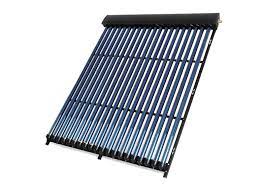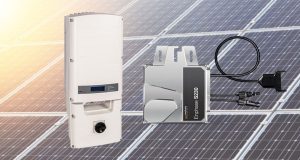A solar collector is a device which captures just as much sunshine as you possibly can, in order to possibly redistribute (focus) or absorb it into a mode of transport moderately. Solar collectors are usually accustomed to generate heat, even though in some cases a parabolic meal is used to concentrate sunlight on the special high-temperature solar cell. The heat generated with a solar collector could be straight accustomed to heat an additional object (e.grams. the kettle or a body of water) or can be not directly used to produce electrical power by generating the steam generator (Stirling motor). Solar collectors come in a large variety associated with designs, dimensions and purposes. Right here, we will introduce you to the most popular types of sun collectors.

Toned dish solar collector
The standard and most everyday sort of solar collector is the flat plate solar collector. At the heart of this collector you will discover the linen associated with thermally conductive dark material (generally metal) which soaks up as much sunshine as possible. Straight below this linen a series of water conduits is located; heat gathered through the absorber is made available to the water and consequently caught up by water flow. The collector is housed in an insulation box, having a cup plate on the top to help insulate as well as heat the machine. Due to their flexibility, relatively reduced expenses as well as ease of installation, flat-plate collectors in many cases are used in solar water heating system systems.
Evacuated tube enthusiast
Evacuated pipe enthusiasts contain a parallel row associated with evacuated cup tubes. Inside every tube, an additional cup tube is positioned, that is protected in a strongly taking in material. Because the removed space obstructs both convection and conduction, the actual absorbed heat offers small way of escape. The temperature within the tube by itself can consequently achieve severe ideals, along with temps associated with One hundred seventy °F to 350 °F commonly achieved. A natural benefit of the actual evacuated pipes, is that their cylindrical form implies that the actual enthusiast is definitely perpendicular to the sun. The disadvantage to solar collector is that sunlight glowing between the tube sis not really captured. This can be partially countered with the addition of the refractive movie towards the back from the enthusiast. An additional drawback is cost: removed pipe enthusiasts are approximately two times as expensive his or her flat-plate counterparts.

Parabolic via sun collectors
A parabolic trough system includes a long curved mirror, which focuses the actual sunshine on a protected pipe. This particular tube of solar collectors contains a heat move fluid, which carries the heat to either a generator or perhaps a water reservoir. In the previous situation, which is most commonly experienced, the heated move liquid is used in order to boil drinking water. The actual acquired steam is passed through a stirling engine, which is used to generate electricity. The advantages of the parabolic via system tend to be effectiveness (20%), ease of tracking (only one axis needs tracking) as well as scalability. These advantages make the system highly suitable for use in big power plants such as The state of Nevada photovoltaic 1. A lot of current and prepared solar power vegetation is depending on parabolic via technology.
However , there is 1 major downside of the parabolic trough: it is extremely responsive to weather. A reduction in incident solar collector energy may cause spectacular reductions within the system’s delivery. Basically, no immediate sunlight indicates hardly any energy. The parabolic via thus remains only beneficial in places that receive lots of sunshine. To be able to bridge hours of restricted sunlight, it is possible to immediate the actual heated liquid via a container of molten nitrate sodium. Nitrate salt has a greatly high energy inertia and is therefore very suitable for heat storage space. So, when the sunlight gets cloudy or models under the horizon, the still warm salts will assure the machine remains operative.
Parabolic meal collector
A parabolic meal (see title image) consists of a solitary parabolically formed reflection, which focuses the actual incident sunshine on a single point (the actual focal point). Temps in solar collectors within the focus can easily reach extreme ideals, although performance is highly based upon climate conditions. Within the focal point, one can locate any item that requires heating. Parabolic meals are generally utilized in solar cooking food, but can also be employed within solar photovoltaics. When this occurs, a unique high-yield high-temperature photovoltaic cellular is positioned in the focal point. The main advantage of the parabolic dish is its severe energy in solar collectors. Disadvantages would be the requirement of a dual axis system and the sensitivity in order to climate conditions.
Systems and chimneys
Some exotic methods to solar collector energy generation include the so-called photovoltaic tower and the solar chimney. Inside a solar tower system, a range of concentric mirrors (heliostats) concentrates the actual sunlight on a single getting station, which is located full of the central structure. This station houses a tank of heat move fluid, which is often used to drive a vapor turbine, producing usable energy. An excellent example of such a system collector is the Spanish PS10 photovoltaic structure.
The actual solar fireplace is different in that this doesn’t directly use the heat, but rather utilizes atmosphere movement due to the solar heating system. The environment is heated inside a huge circular enthusiast area. In the center of this enthusiast area, a very high fireplace is positioned. Because hot air has the inclination to increase, it’ll vigorously discharge by itself through the fireplace. By setting up a turbine in the chimney, the air currents can be transformed into electrical power.




